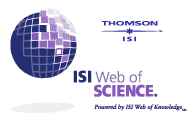Authors
Abstract
Despite the strict contextualization of magic as demonic within the fabric of narrative in Aputeius' Golden Ass, a neglected current in modern academia its pagan legacy - retains scope for a feasible hypothesis in the form of a paradigmatic coalition between its inevitable progeny, desperate witches as well as a distinguished community of thaumataurgoi, the theurgist, whose identity in intellectual discourse, chiefly the finest possible exemplum of polytheistic forms of divination Iamblichus' De Mysteries, clarify their representation of another typology of magic, natural, endorsing a striking parallel in a shared premise - levels of motivation. I wish to propose, that in as much as it throws light on two fold classification of magic as demonic and natural it also fascinatingly reflects degrees of unity, though not without reserve in some areas, between the desperate witches and theurgists in question - the former whose operations often underpin their claims to occult knowledge and whose potential is no less inferior to the elevated concerns of the latter.
Keywords
References
BOHN, R.K. (1973). The Isis Episode. In: Classical Journal, 1973. vol. 68, no. 3, p. 228-231.
BRADLEY, K. Law. (1977). Magic and Culture in the ‘Apologia of Apuleius. In: Phoenix. vol. 51, no. 2, p. 203-223.
BURTON, G. P. (1975). Proconsuls, Assizes and the Administration of Justice under the Empire. In: Journal of roman Studies. vol. 65, p. 92-106.
CLARKE, E. C. (2003). Introduction of Iamblichus: On the Mysteries XCXVII. In: CLARKE, E.C., DILLON, J. and HERSHBELL, J.P. (Eds). On the Mysteries. USA: Society of Biblical Literature.
CORNELIUS, J. (2003). Moment of Astrology. London: Bournemouth.
DILLON, Jhon. (1973). Iamblichi Chalcidensis in Platonis Dialogo Commentarium Fragmenta. Leiden: Brill.
ENNEADS
FINNAMORE, J. (1993). Iamblichus on light and the transparent. In: BLUMENTHAL, H.J. and CLARK, E.G. (Eds). The Divine Iamblichus: Philosopher and Man of Gods, Bristol: Bristol Classical Press.
FRANZ, Cumont. (1912). Astrology and Religion among the Greeks and the Roman. New York & London: G. P. Putnam’s sons.
HERMEIAS. (1973). In: Phaedrus, Fragmenta. Leiden: Brill.
HIJMANS, B.L. (1987). Apuleius Orator, Pro Se De Magi and Florida. In: Aufstieg und Niedergang der römischen Welt – ANRW. Vol. II
IAMBLICHUS. (1989). On the Pythagorean Life, Trs. G. Clark. Ciudad: Editorial.
________. (2003). On the Mysteries. CLARKE, E. C., DILLON, J. M. and HERSHBELL, J. P. (Eds). USA: Society of Biblical Literature.
JOHNSTON, S. L. (1990). Hecate Soteira: A Study of Hecate in the Chaldaean Oracles and related literature. Atlanta: Scholars Press.
________. (1992). Riders of the sky: Cavalier Gods and Theurgic Salvation. In: The 2nd century A.d. Classical Philology. vol. 87, no. 4, p. 303-321.
JUSTICE SUMMERS, R.G. (1970). Roman Justice and Apuleius’ Metamorphoses. In: Transactions and Proceedings of the American Philological Association. vol. 101, p. 511-531.
KINGSLEY, P. (2000). Introduction to the Hermetica: Approaching ancient Esoteric Tradition, Amsterdam: Brill.
MAGIC NORWOOD, F. (1956). The Magic Pilgrimage of Apuleius. In: Phoenix. vol. 10, no. 1, p. 1-12.
MORTLEY, Raoul. (1972). Apuleius and Platonic Theology. In: TAPA. vol. 93, no. 4, p. 584-590.
O’ MEARA, Jhon. (1954). City of God. London: Longmans, Green.
PROCLUS. (1933). Elements of Theology. E. R. Dodds, (Tr). Oxford: Clarendon Press.
PRIESTHOOD RIVES, J. B. (1994). The Priesthood of Apuleius. In: TAPA. vol. 115, no. 2, p. 273-290.
RAPPE, S. (2000). Reading Neoplatonism; Non-Discursive Texts of Plotinus, Proclus and Damascius, Cambridge: Cambridge University Press.
RELIGION GRIFFITHS, J.G. (1960). The Flight of the Gods before Typhon: An Unrecognized Myth. In: Hermes. vol. 88, no. 3, p. 374-376.
RIVES
SAFFREY, H. D. (1971). Abammon, Pseudonyme de Jamblique. In: PALMER, R.B. and HAMMERTON KELLY, R. G. (Eds.). Philomathes: Studies and Essays in the Humanities in Memory of Philip Marlan. Ciudad: Editorial.
SCHLAM, C. (1970). Platonica in the Metamorphoses of Apuleius. In: TAPA. vol. 101, p. 477-487.
SHAW, G. (1995). Theurgy and the Soul: The Neoplatonism of Imablichus. Pennsylvania: Pennsylvania State University Press.
SMITH, J. Z. (1978). Map is not Territory. Leiden: Brill.
SMITH, W. (1972). The Narrative Voice in Apuleius’ Metamorphosis. In: TAPA. vol. 103, p. 513-534.
TAMSYN, Barton. (1994). Ancient Astrology, London and New York: Routledge.
TATUM, J. (1972). Apuleius and Metamorphosis. In: American Journal of Philology. vol. 93, no. 2, p. 306-313.
WAINWRIGHT, W.J. (1981). Mysticism: A study of it’s Nature cognitive value and moral implications. Madison, Wisconsin: The University of Wisconsin Press.
WALSH, P.G. (1970). The Roman Novel. Cambridge: Cambridge University Press.

 PDF (Español)
PDF (Español)
 FLIP
FLIP
























